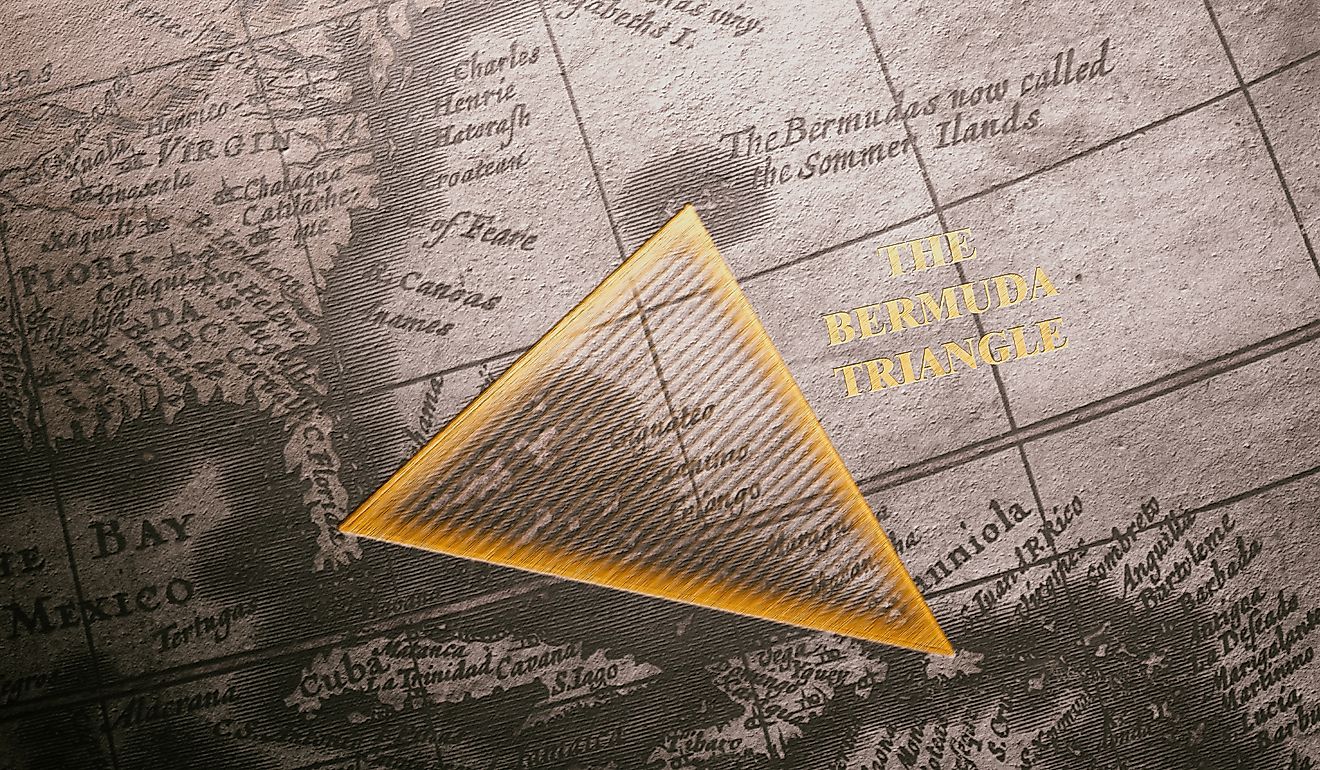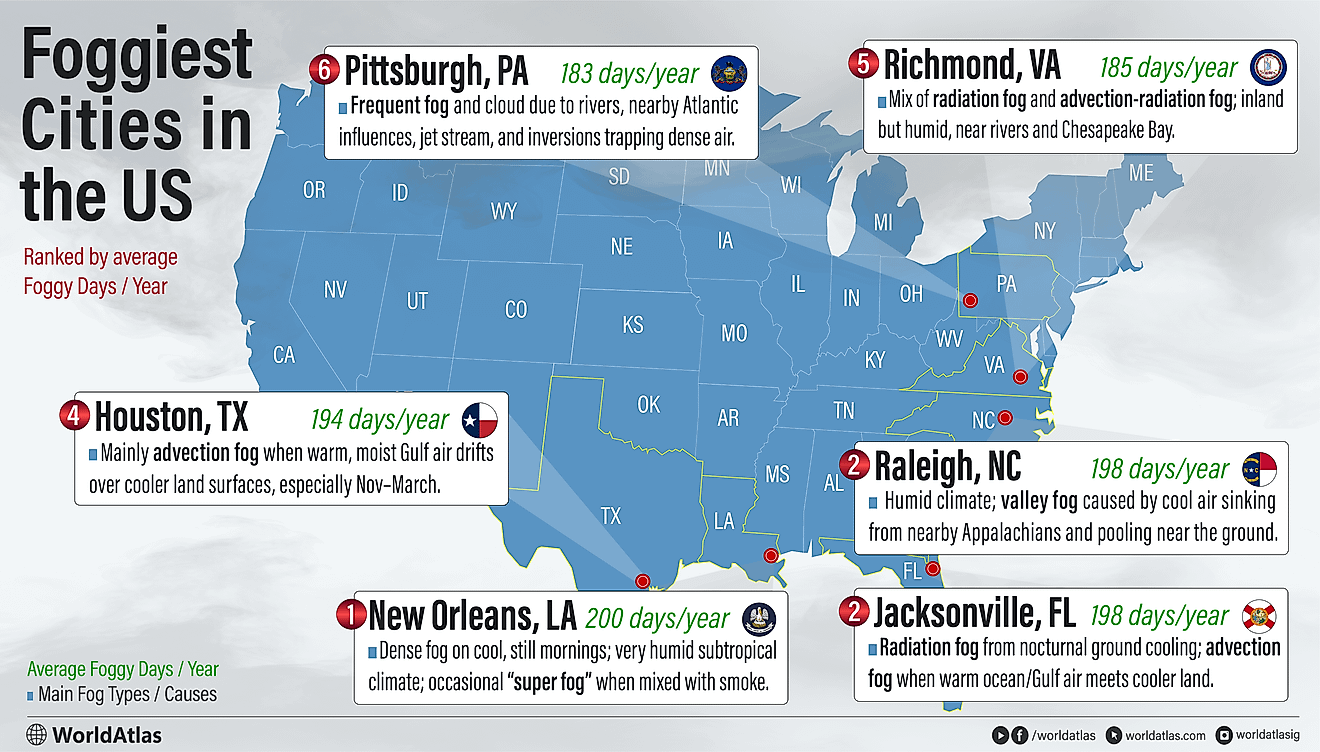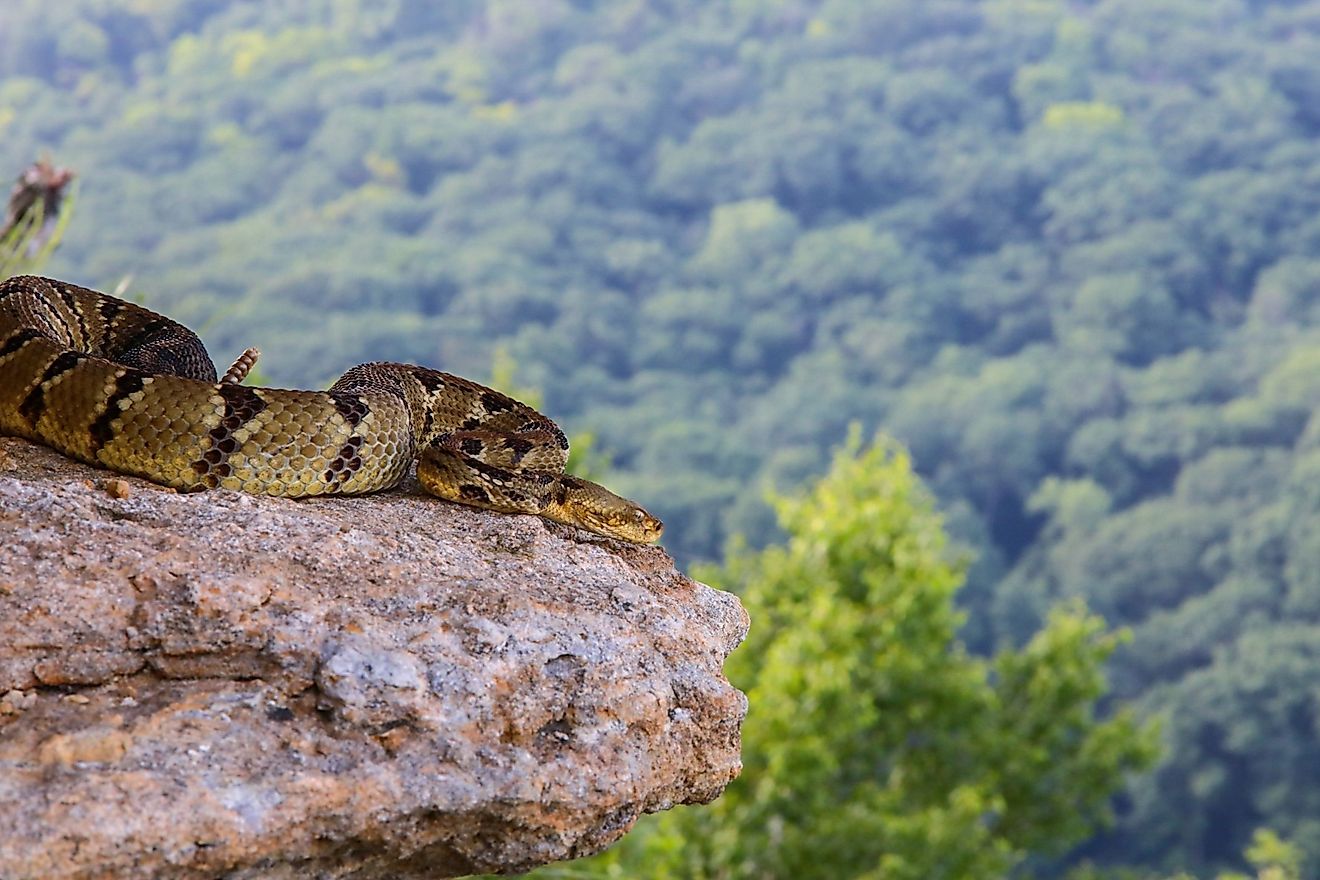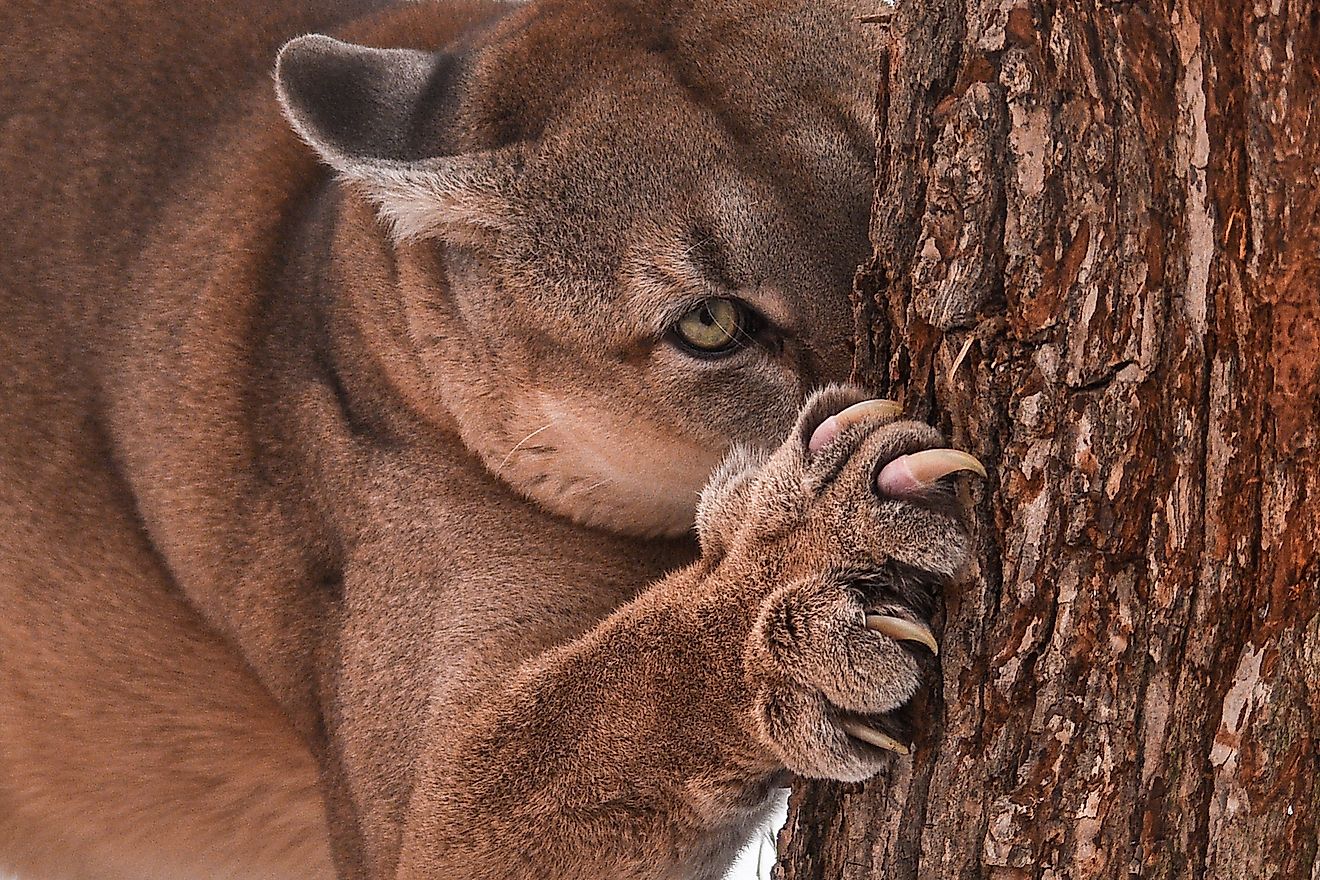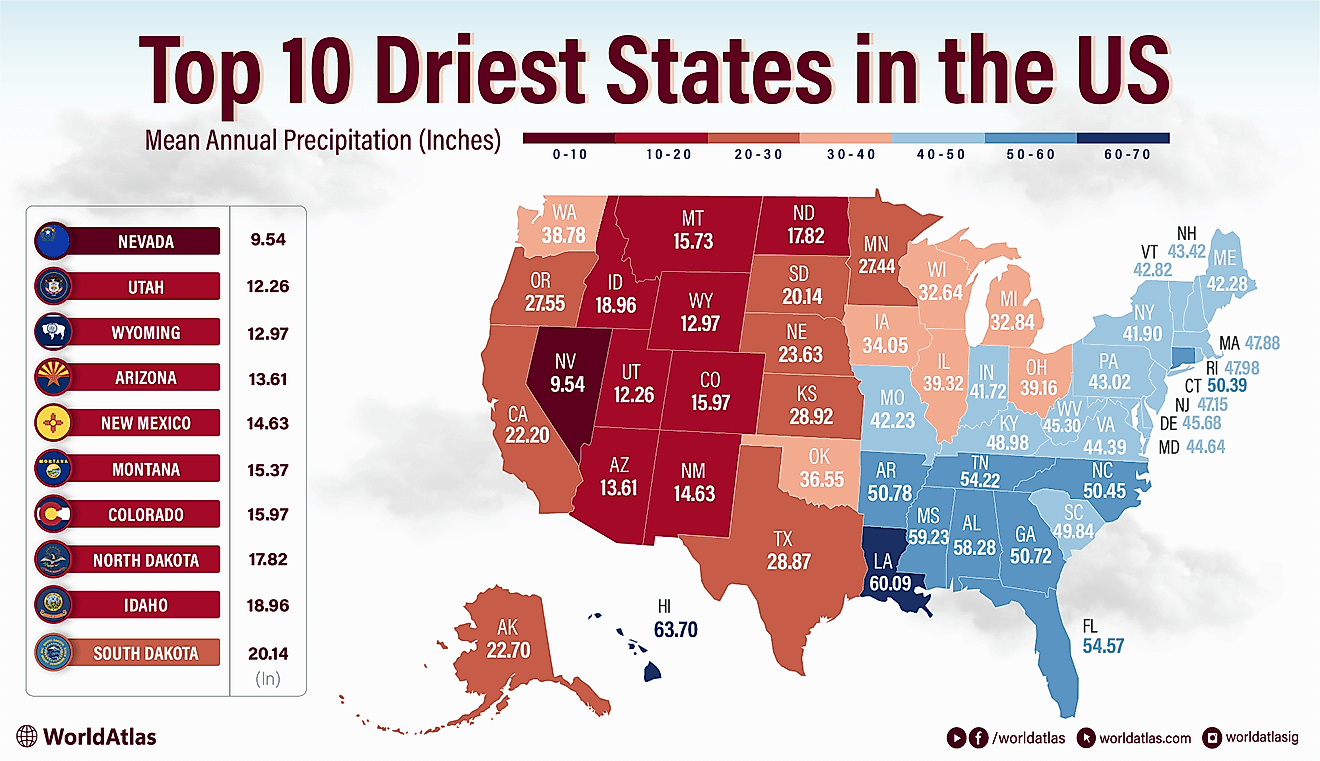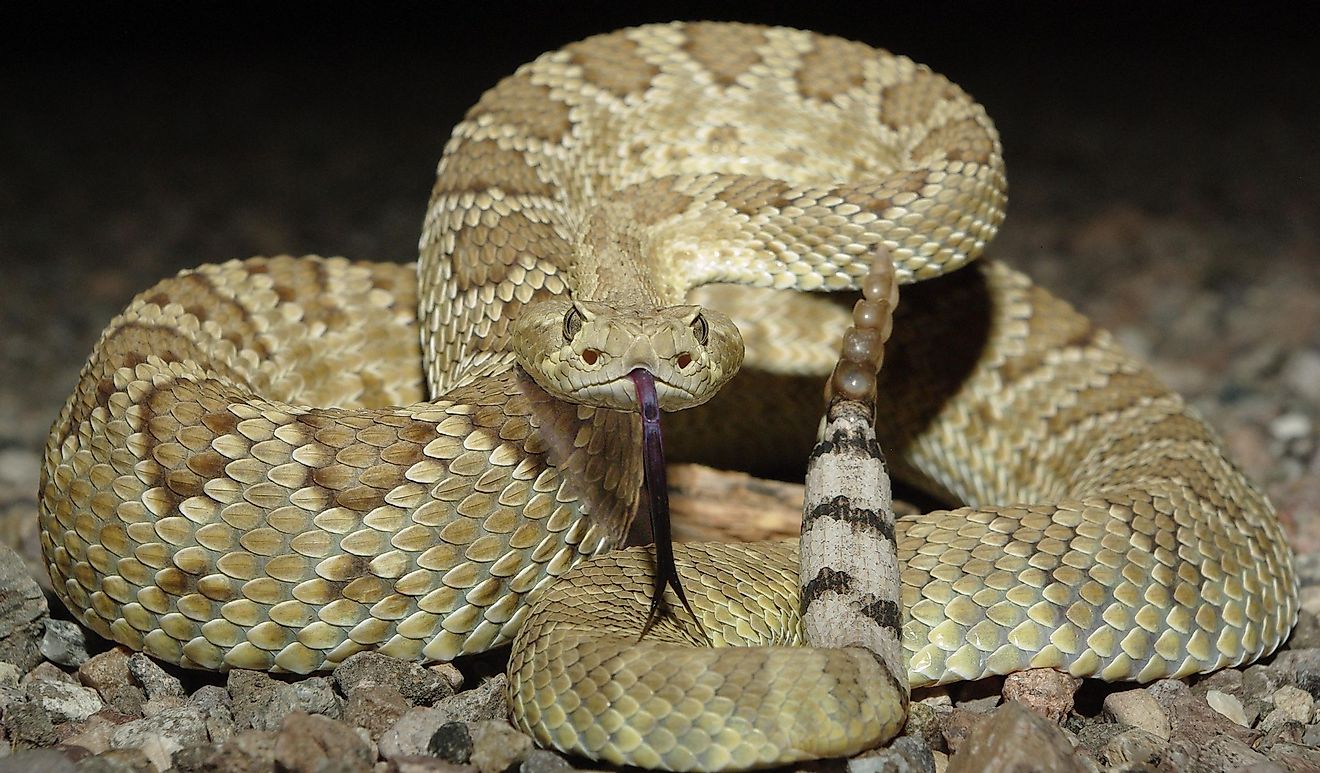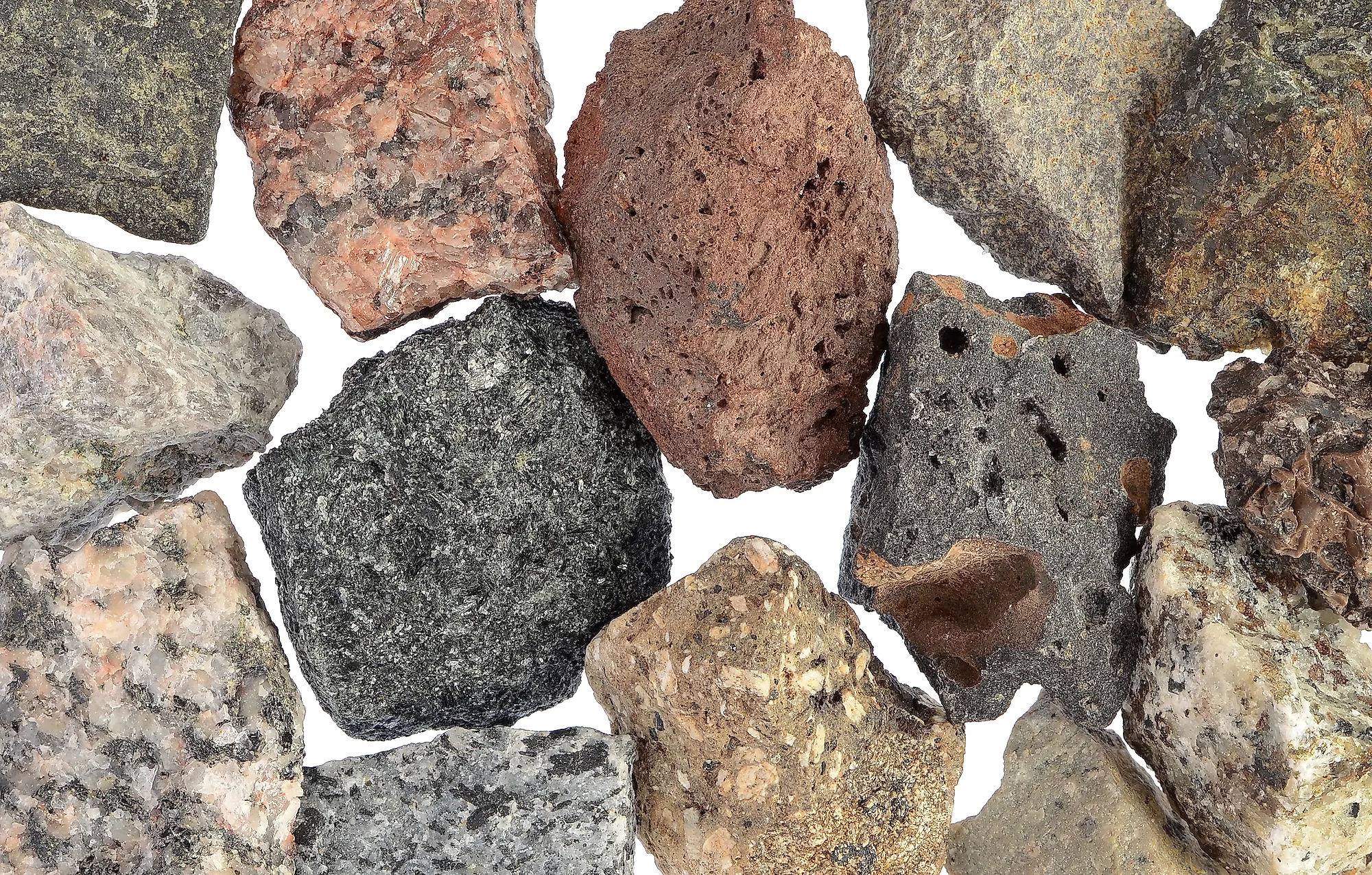
How Are Igneous Rocks Formed?
- Igneous rock is formed when magma, which is liquid molten rock, cools or sets, solidifying into rock and rock formations.
- Extrusive rocks are rocks that have formed on the surface of the earth. This occurs when magma bursts forth from the mantle or crust on to the surface.
- Intrusive rock is rock that forms within small pockets beneath the earth’s crust.
Formation Of Igneous Rocks
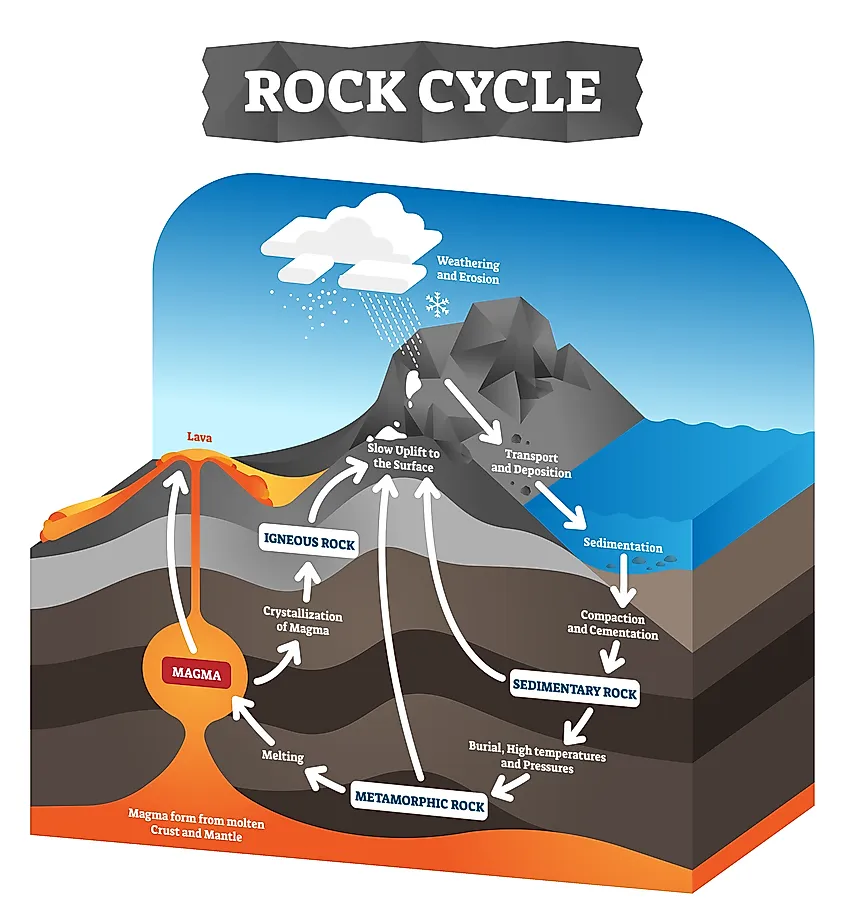
Rocks can be categorized into one of three types: sedimentary, metamorphic and igneous. Igneous rock is formed when magma, which is liquid molten rock, cools or sets, solidifying into rock and rock formations. As this magma, or molten rock emerges to the surface, it experiences a change in temperature and pressure, which forces it to cool and crystallize, forming rock. The word igneous is derived from the latin word ignis, meaning fire. This describes how magma, or rock that has been melted by fire, is the basis of all igneous rocks. Much of the Earth's surface, and the rock found within the Earth’s crust is composed of igneous rock. It is the most common type of rock found on Earth, as it covers approximately fifteen percent of the Earth’s surface, but also makes up much of the inner layers of the Earth, below the crust.
Molten rock is referred to as magma when it lies below the earth's surface, and as lava once it erupts. This distinction is why volcanoes have lava flows, while the molten rock underground is termed magma. In both instances, this rock has melted in one of three ways: by increasing temperature, altering composition, or reducing pressure.
Igneous rocks originate from melted rock in a thick, viscous state, allowing them to develop diverse textures, appearances, and compositions upon cooling and solidification. Sometimes, lava is forcefully released during a volcanic eruption, while in other instances, fissures in the Earth’s crust allow magma to gradually seep out. The rate at which it cools and solidifies significantly influences the type of igneous rock that forms. These rocks can form either above ground, known as extrusive rock, or below the surface, referred to as intrusive rocks. Additionally, there is a third classification: intrusive rock that develops at shallow depths just beneath the crust, called hypabyssal or subvolcanic rock.
Formation Of Extrusive Rocks
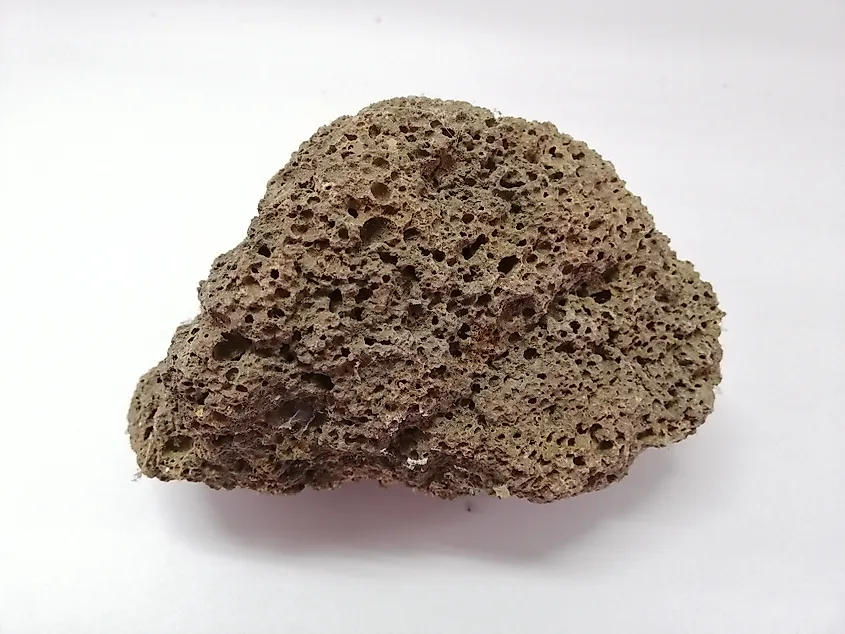
Extrusive rocks are igneous rocks formed on the surface of the earth. This occurs when magma bursts forth from the mantle or crust on to the surface. This generally happens in volcanic areas, when volcanoes erupt or ooze magma. As the hot liquid rock hits the open air on the surface, it cools and solidifies, forming rock. Because the most common way magma escapes is through volcanic activity, these rocks are often called volcanic rock. Rock tends to cool very quickly when it hits the open air. Even in warm climates, the temperature above ground is much cooler than the temperature below the crust, and is at a much lower pressure, so therefore the magma cools and solidifies rapidly. As the molten rock cools, it forms crystals within its rock makeup. When magma cools quickly, these crystals don’t have long to form, and therefore are much smaller, as the crystals stop forming when the rock is fully cool.
Igneous rocks with smaller crystals tend to be smoother and have a glassy appearance. The faster the rock cools, the more glass like it appears. One of the prime examples of this is obsidian, an extremely glassy black rock which forms nearly instantly, and therefore has no individual crystals in its makeup. This process of extremely hot magma cooling has produced a variety of rock types in very unusual shapes. These variations of pattern, texture and even composition vary based on the speed and temperature of the lava flow. Slow moving lava tends to form short steep flows, while quick moving flows produce longer thin variations.
One of the rocks most commonly associated with this volcanic flow is pahoehoe lava. This type of extrusive rock cools very quickly as it flows from a volcanoe or fissure. Because of this, the rock maintains a glossy rolling appearance, and looks as though it was frozen mid flow which, essentially, it was. Another example of this is Pillow Lava, which forms bubble like balls of solid rock. This happens in a similar process to pahoehoe lava, but instead occurs exclusively underwater. In other cases, lava explodes violently from a volcano, expelling it into the open atmosphere where it solidifies almost instantly.
In these cases, lava can cool midair, or as it lands, causing rough, bubbly or stringy looking rocks. These rocks and ash formations are known as volcanic pebbles, ash hailstones or tuffs, which are formed in the air and fall as rock. One of the main examples of this is Lapillistone. Other common extrusive rocks include pumice, pepertite or reticulate. All of these types have varying degrees of holes or pockmarks which give them a rough sometimes even mesh-like texture caused by gas pockets which evaporate and leave gaps in the rock. Extrusive igneous rocks also include andesite and basalt, basalt being one of the most common volcanic byproducts.
Formation Of Intrusive Rocks
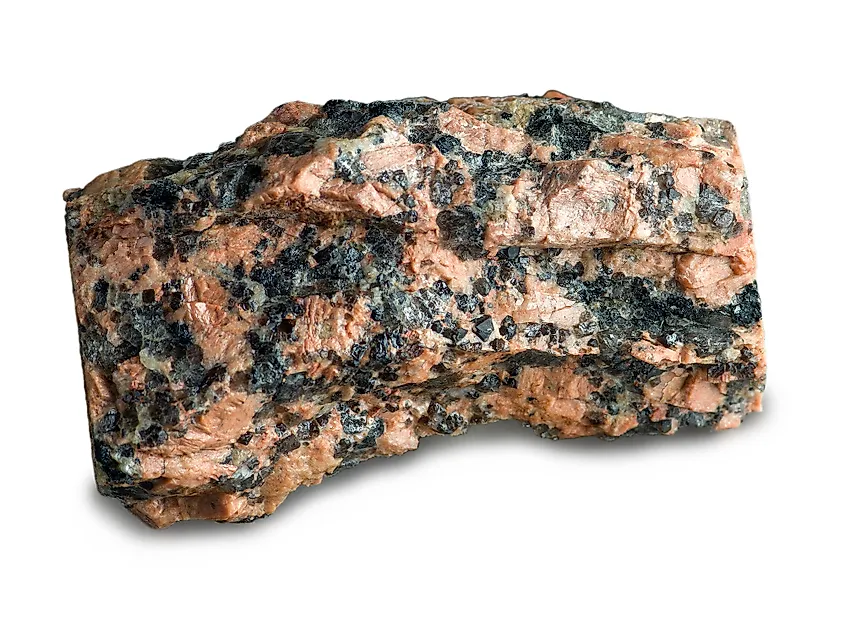
Granite, an intrusive ignerous rock. Image credit: Aleksandr Pobedimskiy/Shutterstock.com
Intrusive rocks are a type of igneous rock that forms when magma cools and solidifies beneath the Earth's surface. Rather than escaping, this magma cools and hardens within the earth’s crust. As a result, intrusive rocks, also referred to as plutonic rocks, cool much more slowly than extrusive rocks, since they are surrounded by existing rock. This slow cooling allows crystals within the rock to grow larger, often making them visible to the naked eye. Rocks with this crystalline texture are classified as phaneritic rocks. The visible crystals can vary significantly in shape and size. Generally, intrusive rocks are very hard and compact. Although their color and crystallization can differ, they are entirely mineral-based, as the heat and pressure during their formation eliminate organic matter. Most intrusive rocks have a coarse grain and do not contain spaces or air pockets. There are five main types of intrusive rocks: granite, pegmatite, gabbro, diorite, and peridotite. Granite is the most common type found on land, while gabbro is primarily found underwater.
Formation Of Hypabyssal Rocks
A hypabyssal, or subvolcanic rock, is a subcategory of intrusive rock. This type of igneous rock forms at very shallow depths, just below the Earth’s surface. It typically develops in fissures or near faults. While these rocks share many characteristics with other intrusive rocks, they feature intermediate grain sizes and textures, typically falling between those seen in extrusive rocks and other intrusive varieties. Examples include diabase, quartz-dolerite, micro-granite, and diorite.

